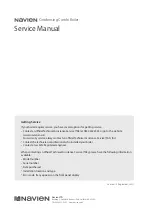
11
CREOSOTE
Creosote condenses from the flue gases more quickly when the temperature in the chimney is
low. The actual amount of creosote deposited is dependent on:
1. The amount of moisture in the flue gases.
2. The temperature of the stack,
3. The rate at which the wood is burned.
4. The amount of draft in the stack.
5. How completely the combustible elements in the flue gases have been burned in the combustion
chamber. Most problems with creosote are due to insufficiently dry wood, poor chimney with low draft
and cold walls, and/or a low rate of burning when little heat is required during the spring and fall
months.
Moisture in the flue gases may be controlled by:
•
Using properly seasoned firewood.
•
Mixing small pieces (preferably slab wood) with every full load.
•
Never use only large wood (usually less dry) during mild weather when combustion is relatively slow.
The temperature in the stack may be controlled by:
•
Using as short a length of stovepipe with as few elbows as possible between the boiler and the
chimney.
The amount of draft in the stack may be controlled by:
•
Insuring adequate chimney height and preventing air leaks in places such as around the ash pit door.
•
Eliminating external obstructions in the chimney outlet.
•
Insulating chimney from heat loss.
Procedure in the event of a runaway fire or chimney fire
If the Boiler-Fire is out of control (or creosote in chimney has caught fire) Do
the Following:
•
Close flue gas damper
•
Turn knob on draft regulator to 40°C
•
Turn-up thermostats in house
•
DO NOT
dose the fire with water as injury from steam could occur
CAUTION












































